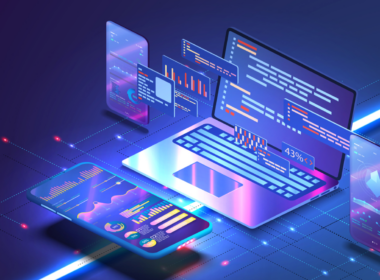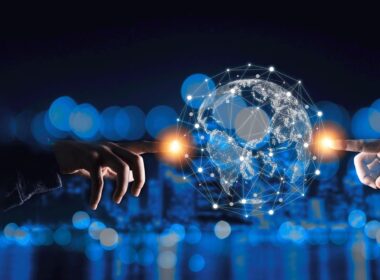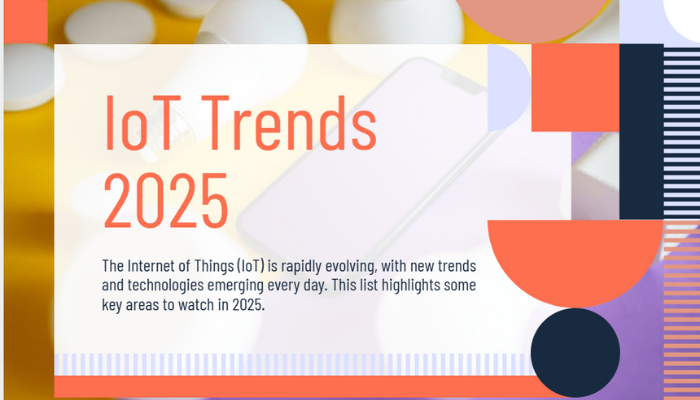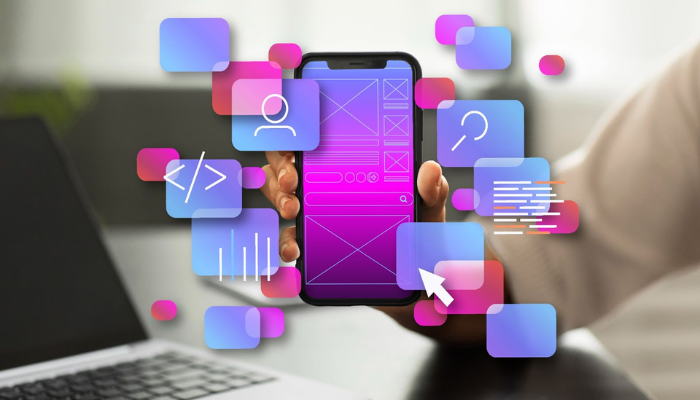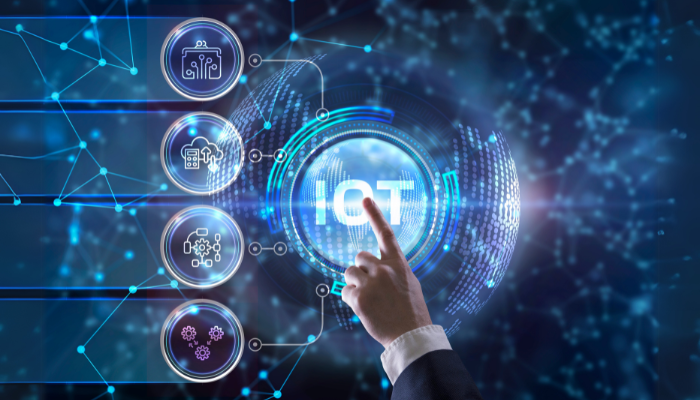As a business leader, you’re always looking for ways to stay ahead and make smarter decisions. Imagine if you could pinpoint exactly when your machines need maintenance before they break down, or if your supply chain could automatically adjust to delays halfway around the world. Or better yet, what if your customers received offers based on how they actually use your products, all without any extra effort on your part?
This isn’t some distant possibility. It’s the reality of IoT (Internet of Things) today, and it’s quietly reshaping the way businesses operate. For entrepreneurs and business leaders, not tapping into IoT means leaving valuable opportunities on the table, whether that’s cutting unnecessary costs, solving complex challenges, or unlocking new growth.
In this blog, we’ll walk you through the biggest IoT trends to watch in 2025, what they mean for your business, and how you can take advantage of them. No complicated jargon, just the clear insights you need to stay ahead of the curve.
Ready to see how IoT fits into your business story? Hop in.
What is IoT and Why Should Business Leaders Care?
The Internet of Things (IoT) is a network of connected devices; like sensors, machines, and gadgets that communicate and share data automatically. For business leaders, IoT means having real-time information about your operations, products, and customers without manual checks.
Imagine your equipment sending alerts before a breakdown, or your warehouse automatically tracking inventory levels. IoT helps you spot problems early, reduce costs, and make smarter decisions faster. It’s not just technology; it’s a way to run your business more efficiently and stay competitive in today’s market.
Internet of Things Market Size
- The Industrial IoT market is growing fast and is expected to reach around $275 billion by 2025.
- From 2025 to 2029, it’s predicted to grow at an average rate of about 13% per year, reaching nearly $455 billion by 2029.
- The United States is leading this growth and is expected to bring in nearly $99 billion in revenue by 2025.
- Industries worldwide are quickly adopting smart manufacturing technologies, changing how they operate and increasing productivity.
With IoT growing rapidly, new technologies and trends are shaping how businesses use connected devices. These developments offer fresh ways to improve efficiency, reduce costs, and create better customer experiences.
In the next sections, we’ll explore the key IoT trends that business leaders and entrepreneurs should pay attention to in 2025, and how these trends can help your business stay ahead.
Emerging IoT Trends to Watch in 2025
The Internet of Things continues to evolve, bringing new opportunities for businesses to streamline operations and enhance customer experiences. As we head into 2025, here are the key IoT trends that will shape the future across various industries.
1. AI and Machine Learning Integration with IoT
By 2025, AI’s integration with IoT devices is fundamentally shifting how businesses make decisions. In industries like manufacturing, logistics, and healthcare, AI-powered IoT devices will analyze real-time data and not just inform you about what’s happening, but predict what’s likely to happen next. For example, predictive maintenance in factories means businesses can detect equipment failures before they occur, avoiding costly downtime.
For business leaders, this translates into more than just automation. It’s about turning vast amounts of data into precise actions. A retailer could optimize inventory levels automatically based on foot traffic patterns or trends, while a fleet manager could reroute vehicles before weather or traffic disrupts schedules. This isn’t just about innovation; it’s about driving tangible savings, efficiency, and long-term growth in your bottom line.
As an entrepreneur, think about how AI in IoT could help you move beyond reactive strategies to proactive, data-driven decisions. It’s not just keeping up with the competition, it’s staying ahead of it.
2. Edge Computing: Speeding Up the IoT Revolution
Edge computing is a major game-changer for businesses looking to get the most out of their IoT networks. With the massive amount of data being generated by IoT devices, sending everything to the cloud for processing can create unnecessary delays. In industries like healthcare or manufacturing, where real-time data processing is critical, edge computing allows devices to process data locally, reducing latency and improving decision-making speed.
For business leaders, this means quicker responses in critical situations. Imagine a healthcare system using IoT sensors in patients’ rooms to monitor vital signs in real-time. With edge computing, those devices can send instant alerts to medical staff, even in remote areas with limited connectivity. In manufacturing, equipment can be monitored for issues and adjusted on the spot, reducing maintenance costs and preventing expensive production halts.
For enterprises, the adoption of edge computing offers efficiency gains, reduced operational costs, and better risk management by allowing smarter, quicker decisions at the point of data collection.
Ready to accelerate your IoT journey? Start with edge computing today!
3. 5G Networks: The Backbone of Future IoT
5G networks are expected to be a transformative force in 2025, especially for large-scale businesses and industries where real-time communication is crucial. The speed and low latency of 5G will enable IoT devices to operate more seamlessly, allowing for a larger number of connected devices without compromising performance.
For instance, smart cities can use 5G to manage traffic flow, monitor environmental conditions, and improve public safety, all in real-time.
For business leaders in industries such as transportation, logistics, and manufacturing, 5G presents a massive opportunity. Autonomous vehicles will be able to communicate instantaneously with traffic systems and other vehicles, improving safety and efficiency. In logistics, 5G-enabled IoT devices will track shipments in real-time, with updates sent instantly to supply chain managers, ensuring smoother operations.
For large enterprises, 5G will allow the scaling of IoT deployments to meet growing demands without sacrificing performance or reliability. By enabling faster, more secure connections, businesses can expand their operations and services with confidence, knowing their IoT networks will keep up with increasing demand.
4. IoT Security: Protecting the Digital Backbone
As IoT networks expand, so does the potential for security breaches. With millions of connected devices communicating with each other, the risk of cyberattacks increases. That’s why IoT security will be a major focus for businesses in 2025. Security solutions will evolve to meet these challenges, with technologies like blockchain providing enhanced encryption for device-to-device communication and multi-layered authentication processes to protect sensitive data.
For business leaders, this means the importance of cybersecurity in IoT cannot be overstated. A breach in a connected system could lead to operational downtime, data theft, or damage to brand reputation. In industries like healthcare, where patient data is highly sensitive, the security of IoT devices will be paramount.
A secure IoT infrastructure not only protects your data but also ensures compliance with regulations like GDPR, HIPAA, and other industry-specific standards.
5. IoT and Blockchain: Securing Transactions in Real-Time
In 2025, blockchain is emerging as a trusted partner for IoT. While IoT connects devices, blockchain secures the data exchange between them. In industries such as supply chain, manufacturing, and finance, blockchain will ensure that every transaction is recorded transparently, securely, and immutably. By pairing IoT with blockchain, businesses can verify transactions in real-time, ensuring data integrity across a vast network of devices.
For business leaders, this means that IoT systems can be trusted with critical operations. For example, in the food industry, blockchain can help track the journey of goods from farm to table, ensuring transparency and reducing fraud. In manufacturing, blockchain can securely track product components across the supply chain, improving accountability and reducing errors.
For entrepreneurs in the supply chain or finance sectors, integrating blockchain with IoT offers a reliable way to automate processes while reducing the risk of fraud and operational inefficiencies. As the adoption of these technologies grows, companies that integrate them early will gain a significant advantage over competitors who hesitate.
Check out our blog on Top IoT Platforms for Global Industrial Development to learn more.
6. Smart Wearables and Health IoT
The healthcare industry continues to embrace IoT in a big way, especially with the rise of smart wearables. From smartwatches to fitness trackers, these devices are no longer just monitoring steps or heart rate, they’re providing continuous health data that can be used for real-time health management. In 2025, wearables will integrate even more advanced health metrics like blood sugar levels, heart arrhythmias, and even mental health indicators.
For businesses in the healthcare and insurance sectors, this opens up new opportunities. Insurance companies, for example, could offer customized premiums based on the real-time health data of policyholders. Hospitals could use wearables to monitor patients remotely, reducing hospital readmission rates and improving patient outcomes.
Entrepreneurs in the wearable space have an opportunity to push the boundaries of health tech by offering solutions that seamlessly integrate into everyday life.
7. Smart Cities: IoT Transforming Urban Living
2025 is the year smart cities take a leap forward. With IoT, cities can manage everything from traffic congestion to waste management, water usage, and energy consumption, all in real time. Sensors embedded in infrastructure like roads, buildings, and public utilities will gather data that can help urban planners make better, more informed decisions.
This will result in smarter, more sustainable cities that improve the quality of life for residents while optimizing resources.
For business leaders, investing in smart city technologies offers an array of possibilities. Construction companies can adopt smart building materials, manufacturers can provide IoT-enabled street lights, and energy companies can optimize power grids. Even traffic management companies can use IoT to predict and manage traffic flow in real time.
For entrepreneurs, the smart city space represents a significant growth opportunity, especially in countries that are pushing for sustainability and urban innovation. By offering IoT-based solutions for city infrastructure, businesses can play a critical role in the future of urban development.
8. IoT in Agriculture: Revolutionizing Food Production
Agriculture is increasingly becoming one of the most innovative sectors for IoT adoption. IoT-enabled devices in farming allow for real-time monitoring of soil conditions, water usage, crop health, and weather patterns. Smart irrigation systems, drones, and sensors are enabling farmers to make data-driven decisions that improve crop yields, reduce water consumption, and lower costs.
For business leaders in agriculture or agri-tech, this trend means a huge opportunity to optimize operations and reduce environmental impact. For large-scale agricultural enterprises, this is about transforming traditional methods into more sustainable, tech-driven practices. Entrepreneurs in the agri-tech space can also tap into IoT-enabled solutions for precision farming, drone technology, and supply chain tracking.
In the long run, IoT in agriculture will not only help businesses become more efficient but will also contribute to the global goal of sustainable food production. Businesses that lead this transformation can differentiate themselves as forward-thinking, environmentally responsible players in the industry.
Also Read: How AI and Farmers are Shaping the Future of Agriculture
9. Automated IoT Systems in Manufacturing
Automation is already reshaping manufacturing, but 2025 will see IoT taking it to new heights. IoT-powered robotics and automated systems will not only perform physical tasks but will also communicate and learn from their environment. This allows businesses to streamline production lines, reduce labor costs, and improve the consistency of product quality.
For manufacturing leaders, IoT integration allows for smarter factories, where machines can self-monitor and even repair themselves. This results in significant cost savings through reduced downtime and improved operational efficiency.
For entrepreneurs and startups in manufacturing, the potential for IoT-based automation offers scalability and innovation, enabling them to compete with larger companies by offering faster, more accurate, and cost-efficient production processes.
As IoT continues to evolve, businesses in manufacturing will have the chance to push productivity and quality to new levels, with less human intervention and more automated reliability.
10. IoT-Enabled Smart Retail
Retail businesses are increasingly using IoT to improve customer experiences, streamline operations, and boost sales. From smart shelves that automatically reorder products to in-store beacons that guide customers to special offers or new products, IoT is helping retailers create personalized shopping experiences.
In 2025, this trend is expected to grow even more as the IoT ecosystem connects online and offline experiences. Retailers can use IoT to track customer preferences, monitor foot traffic in stores, and predict buying patterns, all of which help improve inventory management and drive sales.
For business leaders in retail, this means more tailored customer experiences, better stock management, and ultimately, higher sales. For entrepreneurs, this opens up a chance to innovate, offering IoT-enabled solutions that transform the retail experience from both a consumer and operational perspective.
Must Read: AI Agents Transforming Retail and E-Commerce
11. Voice-Activated IoT Devices
Voice assistants, such as Amazon’s Alexa, Google Assistant, and Apple’s Siri, are becoming the command centers of many IoT systems. By 2025, businesses will increasingly rely on voice-activated IoT devices to automate tasks, control smart environments, and improve user engagement. For instance, voice-activated systems in offices can turn on lights, adjust temperatures, and even control meeting schedules, all via simple voice commands.
For businesses, this trend means smoother and more intuitive customer interactions. In industries like hospitality, voice-activated IoT can be used to enhance customer service by providing instant responses to common questions or requests, enhancing overall experience and satisfaction.
Entrepreneurs will find value in voice-first IoT solutions, as these technologies offer a new interface for interaction, making the user experience more seamless and personalized.
12. The Rise of Digital Twins: Real-Time Virtual Replicas
In 2025, Digital Twins are becoming a key technology for businesses looking to gain deeper insights into their operations. A Digital Twin is a virtual model of a physical object, system, or process that mirrors real-world conditions in real-time. Industries such as manufacturing, automotive, and energy are increasingly adopting Digital Twins to optimize performance and streamline operations.
For businesses, the value of Digital Twins lies in their ability to simulate real-world environments and predict outcomes. For instance, manufacturers can use Digital Twins to simulate production processes, test different scenarios, and spot potential inefficiencies before they disrupt operations. In smart cities, Digital Twins can be used to model everything from traffic patterns to environmental factors, improving planning and resource allocation.
For large enterprises, Digital Twins offer a way to monitor entire systems or products in real-time, providing a clearer view of performance and potential issues. In construction, for example, businesses can use Digital Twins to track the progress of a building project and ensure that it stays on schedule. For entrepreneurs, especially in industries like tech or manufacturing, adopting this technology can lead to smarter solutions and more efficient operations.
As businesses explore the exciting IoT trends shaping 2025, it’s essential to not only keep pace with innovation but also adopt the right practices to ensure these technologies drive real, sustainable value.
Here’s how you can effectively implement these trends in your organization.
Best Practices to Adopt IoT Trends in Your Business
Implementing IoT technologies requires careful planning and strategy. To maximize the benefits of IoT in your business, follow these best practices:
- Start with Clear Objectives: Before jumping into IoT adoption, it’s crucial to define clear business objectives. Whether it’s improving operational efficiency, enhancing customer experience, or gathering more data for decision-making, having well-defined goals will help guide the selection of the right IoT solutions.
- Invest in Scalable Infrastructure: IoT networks can grow rapidly, so it’s important to design a scalable infrastructure. Choose platforms and hardware that can grow with your business. This includes selecting devices that support future technologies, cloud solutions that can handle big data, and robust networking systems that can support the increased data flow.
- Prioritize Security from the Start: Security should be a priority in any IoT deployment. With an increased number of connected devices, businesses become more vulnerable to cyber threats. Ensure that data is encrypted, access is restricted, and all IoT devices are regularly updated to protect against vulnerabilities.
- Leverage Data Effectively: IoT generates vast amounts of data, but raw data alone isn’t useful. To truly benefit from IoT, companies must implement analytics tools that turn data into actionable insights. Use AI and machine learning to analyze patterns and make smarter business decisions in real-time.
- Choose the Right Partners: The success of IoT adoption often relies on working with the right technology partners. Whether it’s selecting the right IoT device manufacturers or partnering with software vendors for analytics, make sure that your partners have a proven track record and understand your specific business needs.
- Continuous Monitoring and Maintenance: IoT devices are not set-and-forget solutions. They require ongoing monitoring and maintenance to ensure they operate efficiently. Implement automated systems for monitoring device health, network performance, and data integrity to catch any issues before they disrupt business operations.
By following these best practices, businesses can successfully integrate IoT trends into their operations, creating a smarter, more efficient future.
IoT implementation doesn’t have to be overwhelming. With Codewave’s expertise, you gain a trusted partner who understands your unique needs and will help you integrate the latest IoT trends seamlessly into your business.
How Codewave Helps in IoT Development?
At Codewave, we don’t just follow IoT trends, we create solutions that bring them to life. Here’s how we help businesses use connected devices using the right technology:
- Custom IoT Application Development– We build scalable, secure apps tailored to your needs using technologies like Node.js, React, and MQTT, ensuring smooth device communication and user-friendly dashboards.
- IoT Device Integration– We connect diverse hardware and sensors using protocols such as Bluetooth Low Energy (BLE), Zigbee, and LoRaWAN to create a unified, reliable IoT ecosystem.
- Real-Time Data Analytics– We utilize tools like Apache Kafka, AWS IoT Analytics, and Python to collect and process data instantly, giving you actionable insights faster.
- Security and Compliance– We implement end-to-end security using encryption standards like TLS/SSL, blockchain frameworks, and secure authentication methods to protect your devices and data.
- Cloud and Edge Solutions– Leveraging cloud platforms such as AWS, Azure, and Google Cloud along with edge computing frameworks like Azure IoT Edge, we design architectures that balance power and speed.
- Maintenance and Support– Our teams provide continuous monitoring and updates with tools like Prometheus and Grafana to ensure your IoT systems stay reliable and up-to-date.
Partnering with Codewave means gaining a tech-savvy team focused on turning IoT possibilities into measurable business outcomes.
Ready to build your IoT future? Contact Codewave today and start creating smarter, more connected operations.
Codewave is a UX first design thinking & digital transformation services company, designing & engineering innovative mobile apps, cloud, & edge solutions.
